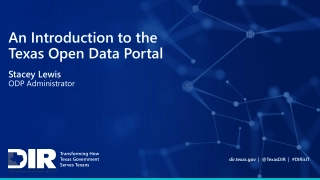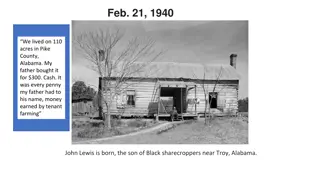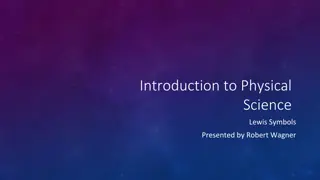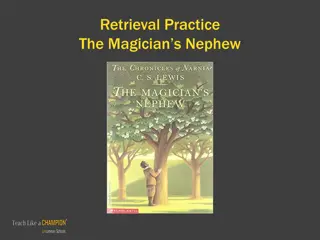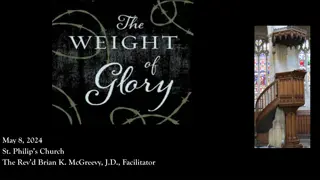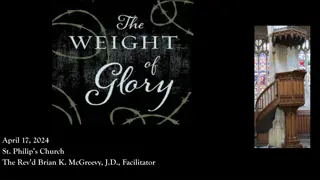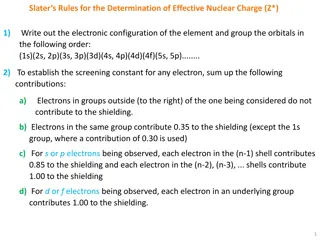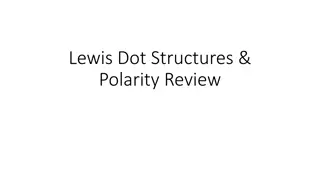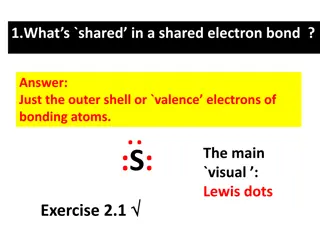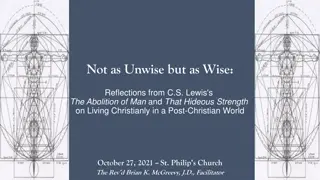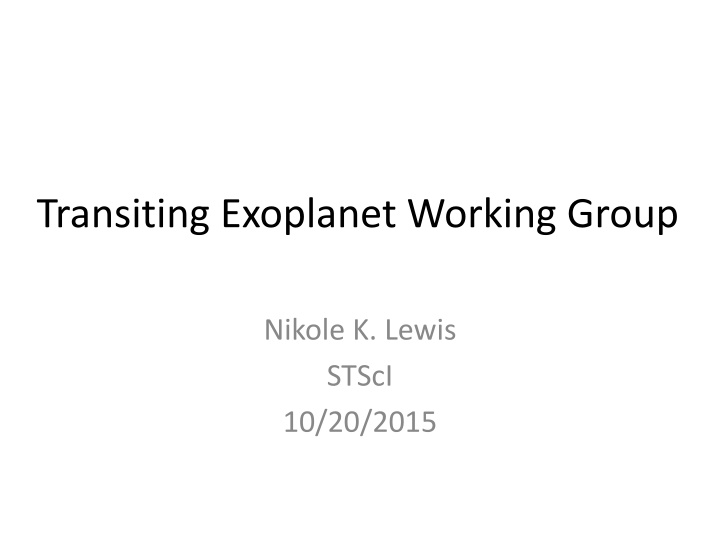
Insights into Time-series Observations and Exoplanet Research
Exploring the world of transiting exoplanets, this content delves into the requirements for conducting time-series observations (TSOs) and the precise time-tagging of integrations. Discover the key considerations for observing transiting exoplanets, signal strengths, and the operational necessities for TSOs. Learn about the limits on accuracy and precision of time tags, as well as the technical aspects involved in conducting such observations. Whether it's understanding the science case for transiting exoplanets or the requirements for TSOs, this content provides valuable insights into observational methodologies and data processing in the field of exoplanet research.
Download Presentation

Please find below an Image/Link to download the presentation.
The content on the website is provided AS IS for your information and personal use only. It may not be sold, licensed, or shared on other websites without obtaining consent from the author. If you encounter any issues during the download, it is possible that the publisher has removed the file from their server.
You are allowed to download the files provided on this website for personal or commercial use, subject to the condition that they are used lawfully. All files are the property of their respective owners.
The content on the website is provided AS IS for your information and personal use only. It may not be sold, licensed, or shared on other websites without obtaining consent from the author.
E N D
Presentation Transcript
Transiting Exoplanet Working Group Nikole K. Lewis STScI 10/20/2015
Signal Strengths Less Than Eclipse Depth
Transiting Exoplanets: Requirements Exposures on the order of hours to days Stable pointing (no dithers, no parallels) Brightest host stars generally present best SNR
Time-Series Observations (TSOs) Other use cases with similar operational and pipeline processing requirements include: Solar system stellar occultations, eclipses, mutual events Eclipsing cataclysmic variables Brown Dwarf Variability Non-transiting exoplanet phase curves
Time-series Observations (TSO) Reqs Exposures longer than 10,000 sec Phase Constraints in APT ([-1,1]) Visits exceeding 24 hours Minimum number of guide stars required (mitigate failure during long stares) Uninterruptible observations > 48 hours BJD_TDB time standard (HJD and BJD_UTC) Slew to science target ASAP and wait (allows for thermal settling) Time-tagging of integrations Timing of target acquisition relative to slew and start of science data collection FITS file format for TSO exposures Disable Dithers in TSO observations Flag integrations acquired during HGA moves Avoid electronic and mechanical disturbances (NO_PARALLEL) Cross-instrument TSO functionality (APT, pipeline, etc.) Open, development in progress Nearly Closed Closed
Time Tagging of Integrations What sets limits on accuracy/precision of time tags? 10 s precision on frame time Onboard time tags (UTC) are generated when the last pixel of science image is read Onboard clock sampled at a rate of 64 ms, which sets the precision limit for the time tags of SSR science data files Corrections to the onboard clock can be updated on 12hr contact interval. Linear correction is applied on 1.024 s intervals (with 0.5 ms accuracy), with steps on the order of a few microseconds. Clock will not be allowed to drift more than 1 s away from the true UTC time over a 24 hour period. Clock performance can be estimated starting in 2016 (EMTB, OTB facilities). Bottom line: 64 ms clock sampling rate is limiter to time-tag accuracy.
Time Tagging of Integrations What is a science image ? Packet of data equivalent to one full frame (2048x2048). Subarray data will stacked frame-by-frame (group-by-group) until it meets this size. For example 64 256x256 subarrays would be included in one science image. This means timestamps are generated every 10.7/42.2 seconds (accurate to 64 ms). Bottom line/Take Away: Don t panic! Very similar to subarray stacking and timestamp cadence used by Spitzer (64 frames per image with one timestamp) Frame times are precise and allow extrapolation between timestamps Reformatting of data will take care of timestamp propagation (discussion on next slide).
Fits File Formatting for TSO Original Plan: one fits file per exopsure with a timestamp(s) propagated from last pixel read. Suggested Plan: A new pipeline processing module created that will repackage all TSO data products (raw frames, calibrated ramps, etc.) and include time tags with each frame. Time tags will be generated in multiple flavors including BJD_TT, BJD_UTC, HJD_UTC HST/Spitzer include time tags in header, Kepler as a table extension (I ve been told the latter is more computationally efficient). Work continues on one fits file per exopsure vs. one fits file per integration. Need solution that will work in context of current pipeline/archive architecture.
TSO Version of Pipeline Standard pipeline design would require TSO users to work with raw integrations TSO pipeline minimizes corrections that could introduce unwanted errors (less is more). TSO pipeline provides high-level data products in temporal space as opposed to stacking integrations. Currently working Calibration and Pipeline WGs to enable TSO science.
Tracking Data Features Persistence/Latent Images Saturation/Linearity Pointing Jitter/Settling IPSV, IPC Background Noise (white, 1/f, red) Flat-Fielding Errors On orbit calibration HAT-P-2, 8 m High-Precision Time Series Observation w/JWST Website Coming Online at the end of October! SSC
Enabling Transiting Exoplanet Science with JWST A STScI Mini-Workshop November 16th- 18th, 2015
Goals of the Workshop Inform the community about JWST s capabilities for transiting exoplanet observations, so that they can start thinking about good science cases now. Inform both STScI and the broader community about some of the cutting edge exoplanet science that can be enabled with JWST through invited science talks. Facilitate discussions in the transiting exoplanet community about wants/needs for early release science programs and support from STScI (clearing house for data reduction tools, data challenges, etc.) Currently ~60 in person participants. Workshop Link

